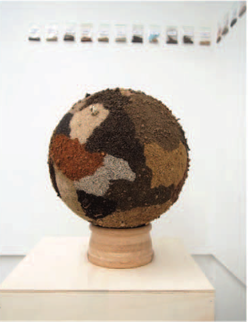
As the curator of the eco-exhibition Gaïa, I am honored to announce that the travelling show has been selected for the purpose of an interesting environmental psychology research on climate
change art.
The study, conducted by two scientists from the Norwegian University of Science and Technology, Laura Kim Sommer and Christian Andreas Klöckner, has been recently published on Psychology of Aesthetics, Creativity, and the Arts by the American Psychological
Association. It investigates the capacity from an artwork related to climate change to raise awareness in audiences.
The exhibition Gaïa, exploring the link between Gender and Ecology, was presented in partnership with the Mairie de Paris, and organized in the
broader context of ArtCOP21, an environmental arts festival which took place parallel to the United Nations
Climate Change Conference (Conference of the Parties [COP21]), in November 2015, in Paris.
The show, which have seen the most artworks selected for the overall research, has been a particular interest for the scientific study which based its analysis from several installations from the
exhibition (such as La Terre from Jisook Min, Sertella Septentrionalis from Laura Sanchez Filomeno) as well as participatory artworks such as « Gaïa » from Laurence Hochin. In
this explorative study using cluster analysis, characteristics of the artworks were connected with emotional and cognitive audience responses.

The conclusion of the research stresses the importance of moving « away from a dystopian way of depicting the problems of climate change, toward offering solutions, and emphasizing the
beauty and interconnectedness of nature ». It also suggests to the activist artists to create a « personal connection to the causes and consequences and offer solutions. “Painting
things black” and inducing fear is also not the best way to go, since it induces more fear, which reduces motivation » (O’Neill, Hulme, Turnpenny, & Screen, 2010) »
The survey is a great example of how, contemporary arts and sciences, guided by a multidisciplinary approach, could work together to foster ecological awareness and encourage social changes. The
research conclusions are also in line with the spirit in which the Gaïa exhibition has been curated, with an emphasis on poetic and somehow positive tone, aiming at infusing paths of hope, in
front of a serious and urgent theme such as climate change.
Julia Rajacic
Independent art curator

Write a comment